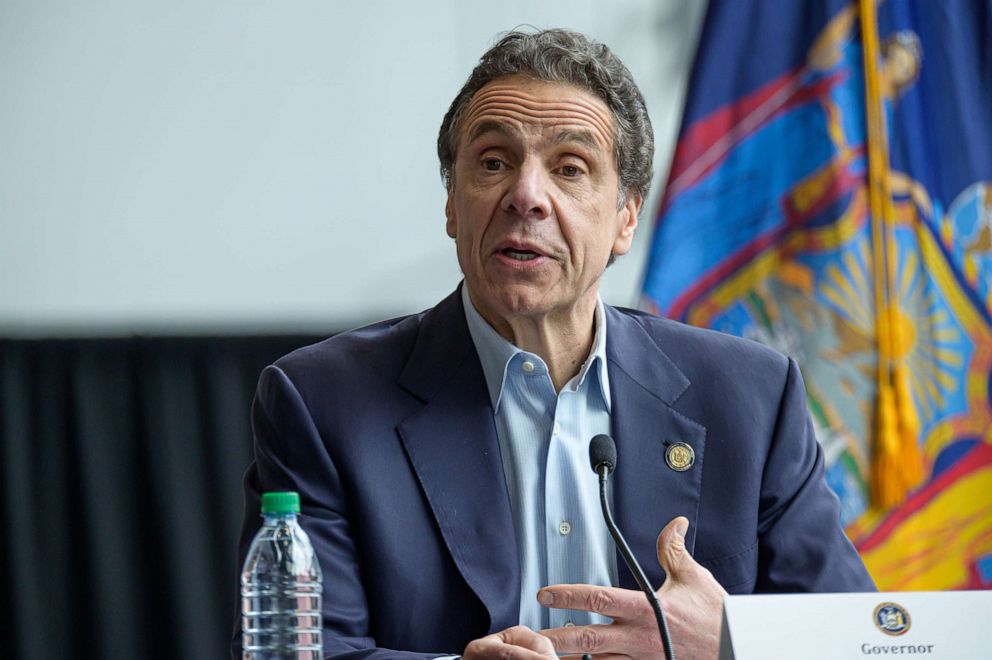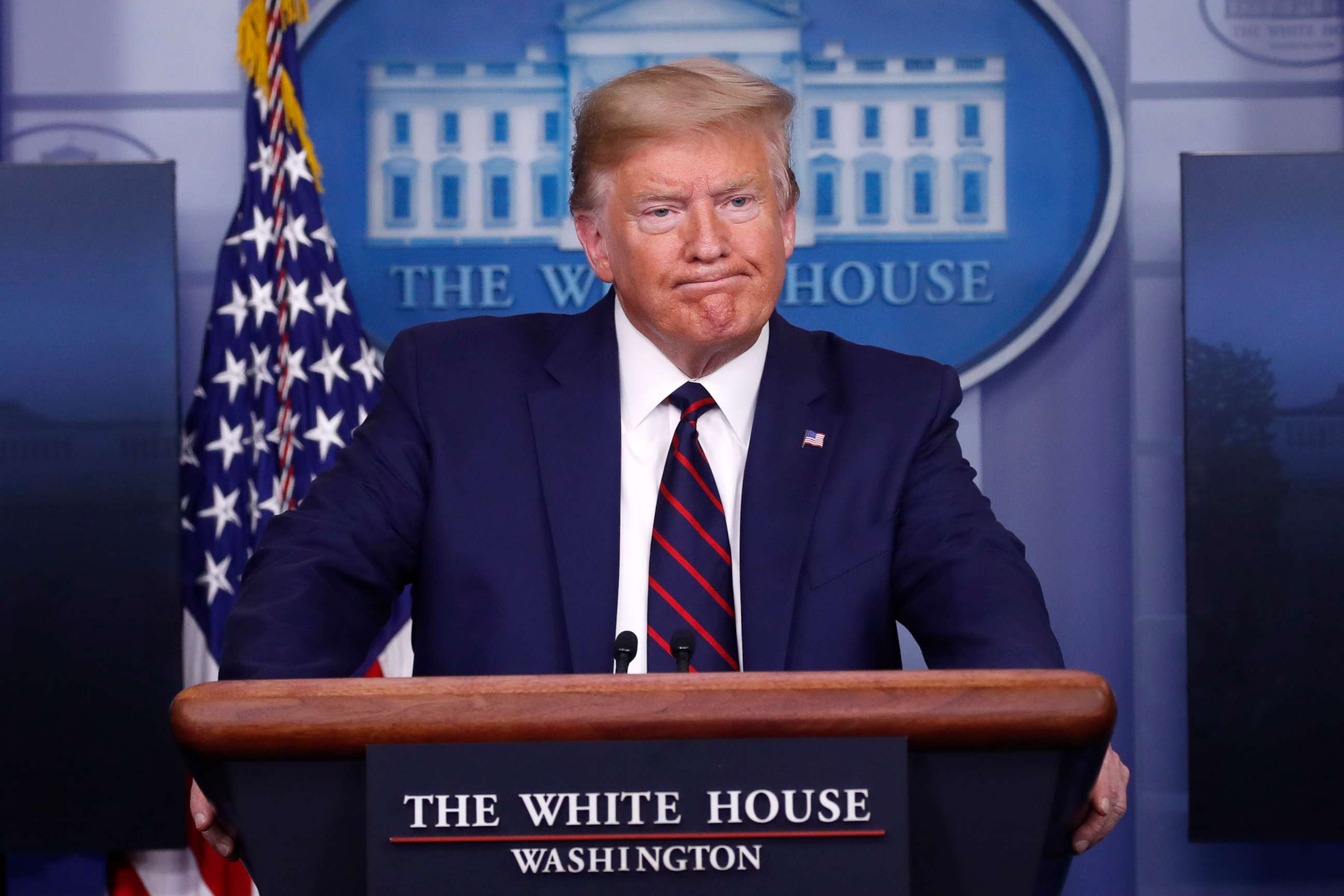Competition among state, local governments creates bidding war for medical equipment
Gov. Cuomo has called for the creation of a 'nationwide buying consortium.'
As coronavirus testing expands and more cases of infection are being identified, doctors, nurses and other healthcare workers are scrambling to find enough medical supplies to replenish their dwindling supply.
But state and local governments across the United States are vying to purchase the same equipment, creating a competitive market for those materials that drives up prices for everyone.
"A system that's based on state and local governments looking out for themselves and competing with other state and local governments across the nation isn't sustainable,” said John Cohen, an ABC News contributor and former acting Undersecretary of the Department of Homeland Security, “and if left to continue, we'll certainly exacerbate the public health crisis we're facing.”
“There's a very real possibility,” he added, “that those state and local governments that have the most critical need won't get the equipment they need.”

There are more than 216,000 confirmed COVID-19 cases in the United States, according to the John Hopkins University's Coronavirus Resource Center, and governments across the country are facing shortages of both personal protective equipment (PPE) – everything from gloves to face shields to gowns to sanitizers to N95 masks – for frontline healthcare workers, and critical care equipment, like ventilators, that keeps severely ill patients alive.
Governor Andrew Cuomo of New York, which has become the epicenter of the outbreak in the United States with more than 92,000 confirmed cases, has blamed a surge in prices amid the crisis on a state vs. state bidding war.
“When I showed you the price of ventilators went from $25,000 to $45,000. Why? Because we bid $25,000. California says, ‘I'll give you $30,000’ and Illinois says, ‘I'll give you $35,000’ and Florida says ‘I'll give you $40,000,’” Cuomo said during a press conference Saturday. “We're literally bidding up the prices ourselves.”
Cuomo called on the federal government - or even states themselves - to get organized and eliminate private market competition.
“You can't have the states competing against the states, and then by the way, when the federal government goes out to buy the same equipment for their stockpile, now it's 50 states competing against the states and the federal government competing against the states,” Cuomo said. “This is not the way to do business. We need a nationwide buying consortium.”

The Trump administration does not appear to have responded to this push for centralized purchasing from Cuomo and others, but the federal agencies are providing some relief. The U.S. Department of Health & Human Services announced last month that it would purchase 500 million N95 respirators over the next 18 months for the Strategic National Stockpile (SNS).
According to the Federal Emergency Management Agency (FEMA), the Coronavirus Aid, Relief, and Economic Security Act, which was signed by President Trump last week, allocates $27 billion “for the development of vaccines and other response efforts, including $16 billion to build up the SNS with critical supplies, including masks, respirators, and pharmaceutics.”
Earlier this week, 80 tons of PPE supplies were delivered to New York, New Jersey and Connecticut, FEMA said, and items will continue to be distributed to “areas experiencing the greatest increase in COVID-19 cases with the largest forecast capacity shortfalls.”
But President Trump also acknowledged this week that the Strategic National Stockpile is nearly depleted, telling reporters that supplies are being sent directly to hospitals instead of through states.

And ABC’s owned stations across the country, meanwhile, are reporting that, in several states, much-needed supplies are not reaching the front lines.
New York has received one ventilator for every five it requested from the federal government, according to WABC-TV. Illinois Governor J.B. Pritzker said the federal government sent the state the wrong type of mask, WLS reported, sending surgical masks instead of the more coveted N95s. And a report from North Carolina’s Department of Health and Human Services obtained by WTVD shows state officials there only received a portion of the masks, gowns, gloves and face shields it requested from the federal government.
In a Thursday morning tweet Trump pushed back on states’ claims that the federal government isn’t providing enough equipment, fast enough.
“Some have insatiable appetites & are never satisfied (politics?). Remember, we are a backup for them. The complainers should have been stocked up and ready long before this crisis hit. Other states are thrilled with the job we have done,” he tweeted. “Sending many Ventilators today, with thousands being built. 51 large cargo planes coming in with medical supplies. Prefer sending directly to hospitals.”
According to California Governor Gavin Newsom, some governors are starting to tackle the problem on their own, forming partnerships and connecting procurement teams to work together and ensure “none of us are being greedy at this moment and that we have the capacity to move things around.”
“We want to help other states even as large as Illinois and Washington State, some of the largest states in our nation,” Newsom said, “to see if we can help procure not only a reduction in costs per unit, but also procure a mindset where we’re not playing in the margins of a zero sum where it’s us versus them.”
Lisa Bartley, Chuck Goudie, Jonah Kaplan, Jovana Lara, Danielle Leigh, Barb Markoff, Cheryl Mettendorf, Dan Noyes, Ted Oberg, Chad Pradelli, Sarah Rafique, Tonya Simpson, Christine Tressel, Ross Weidner contributed to this report.
What to know about coronavirus:
- How it started and how to protect yourself: coronavirus explained
- What to do if you have symptoms: coronavirus symptoms
- Tracking the spread in the US and Worldwide: coronavirus map
Tune into ABC at 1 p.m. ET and ABC News Live at 4 p.m. ET every weekday for special coverage of the novel coronavirus with the full ABC News team, including the latest news, context and analysis.




